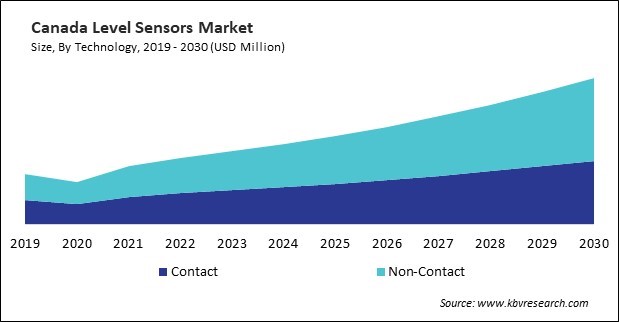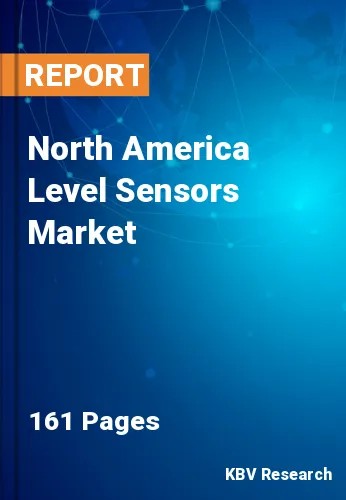The North America Level Sensors Market would witness market growth of 8.0% CAGR during the forecast period (2023-2030). In the year 2019, the North America market's volume surged to 6356.3 thousand units, showcasing a growth of 11.5% (2019-2022).
Continuous level monitoring in the level sensors market encompasses various monitoring types tailored to specific industrial applications. One prevalent method is through ultrasonic level sensors, which utilize sound waves to measure distances and accurately determine liquid or solid levels within tanks or containers. These sensors offer non-contact operation, making them suitable for corrosive or hazardous environments. Therefore, the Canada market utilized 677.4 thousand units of Continuous level monitoring level sensors in 2022.

The US market dominated the North America Level Sensors Market by Country in 2022, and would continue to be a dominant market till 2030; thereby, achieving a market value of $1,881.1 million by 2030. The Canada market is experiencing a CAGR of 10.5% during (2023 - 2030). Additionally, The Mexico market would exhibit a CAGR of 9.5% during (2023 - 2030).
Level sensors are devices used to detect the level of liquids, powders, or other substances in a container or system. They are crucial in various industries, including manufacturing, automotive, chemical, pharmaceutical, and food and beverage. These sensors are essential for ensuring the proper functioning and safety of processes that handle and store liquids or powders. Several level sensors are available, each with its working principle and applications. Float level sensors, for instance, employ a float that ascends or descends in tandem with the liquid level in order to trigger a switch or sensor that signifies the level. These sensors are often used in tanks and reservoirs where the liquid level needs to be monitored continuously.
Moreover, ultrasonic level sensors measure the distance to the liquid's surface via ultrasonic waves. These sensors are noncontact and are suitable for use in corrosive or hazardous environments. Capacitance level sensors measure the change in capacitance between two plates, one of which is immersed in the liquid, to determine the level of the liquid. These sensors are commonly used in applications where the level of a non-conductive liquid needs to be measured.
A portion of the substantial expansion of the automotive industry in North America is propelling the level sensors market toward its zenith. The growing trend towards electric vehicles (EVs) also drives the demand for level sensors in North America. EVs require sophisticated battery management systems that rely on level sensors to monitor the state of charge and ensure the battery's safe operation. Thus, the expanding automotive sector in North America is driving significant growth in the level sensors market.
Free Valuable Insights: The Level Sensors Market is Predict to reach USD 9.6 Billion by 2030, at a CAGR of 8.7%
Based on Technology, the market is segmented into Contact (Guided Wave, Magnetostrictive, Hydrostatic, Magnetic & Mechanical Float, Pneumatic, and Others) and Non-Contact (Ultrasonic, Microwave/Radar and Others). Based on Monitoring Type, the market is segmented into Continuous Level Monitoring and Point Level Monitoring. Based on End User, the market is segmented into Industrial Manufacturing, Oil & Gas, Wastewater, Chemical & Pharmaceuticals, Consumer, and Others. Based on countries, the market is segmented into U.S., Mexico, Canada, and Rest of North America.
By Technology (Volume, Thousand Units, USD Billion, 2019-2030)
By Monitoring Type (Volume, Thousand Units, USD Billion, 2019-2030)
By End User (Volume, Thousand Units, USD Billion, 2019-2030)
By Country (Volume, Thousand Units, USD Billion, 2019-2030)
Our team of dedicated experts can provide you with attractive expansion opportunities for your business.

